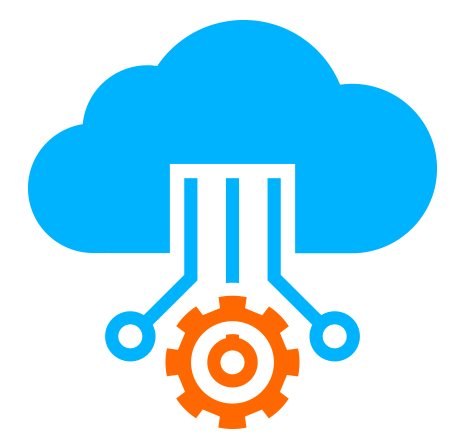 Server
Colocation
Server
Colocation
 CDN
Network
CDN
Network
 Linux Cloud
Hosting
Linux Cloud
Hosting
 VMware Public
Cloud
VMware Public
Cloud
 Multi-Cloud
Hosting
Multi-Cloud
Hosting
 Cloud
Server Hosting
Cloud
Server Hosting
 Kubernetes
Kubernetes
 API Gateway
API Gateway

In an era where artificial intelligence (AI) is woven into everything—from real-time fraud detection to AI chatbots and recommendation engines—inference latency is the silent performance metric that can make or break user experience.
According to a 2024 IDC report, over 68% of enterprise AI applications failed to scale to production due to latency issues in inference workloads. That’s huge.
When users interact with AI-enabled services, they expect quick, seamless responses. Whether it’s a voice assistant translating speech or a retail app showing personalized suggestions, slow inference results in dropped sessions, reduced engagement, and eventually, business loss.
This is why profiling and optimizing inference latency is more than just a backend concern—it’s mission-critical.
As businesses embrace AI inference as a service, offered by platforms like Cyfuture Cloud, AWS, GCP, and others, the ability to profile latency effectively becomes crucial. In this knowledge base, we’ll unpack the top tools and best practices you can use to profile inference latency like a pro, while strategically weaving in how cloud-based inference platforms play a role in making this easier and more efficient.
Before jumping into the tools, let’s clarify what inference latency really means.
Inference latency is the time taken from the moment a request is made to an AI model to the time a response is received. It involves multiple stages:
Network latency: Time taken to send and receive the data
Pre-processing latency: Time to format and prepare the input
Model loading latency (especially in serverless setups)
Actual model computation latency
Post-processing latency
Each stage matters—especially in serverless environments like Cyfuture Cloud, where resources may not be pre-warmed. Understanding where the delay occurs is essential for meaningful optimization.
Let’s now dive into the tools you can use. These aren’t just "plug-and-play" metrics dashboards—they're purpose-built solutions that help uncover latency bottlenecks in cloud or hybrid environments.
If you're working with GPU-backed inference workloads, NVIDIA’s profiling tools are gold-standard.
Nsight Systems: Provides timeline views of CPU-GPU interactions
Nsight Compute: Offers in-depth kernel performance analysis
Use Case: You're hosting a PyTorch model with GPU acceleration on Cyfuture Cloud and notice occasional spikes in latency. Nsight helps isolate whether it's due to kernel launch delays, memory bottlenecks, or I/O waits.
Best For: High-performance inference in cloud environments where GPU usage matters.
For developers working in PyTorch, torch.profiler is an essential tool to break down and log:
Operator-wise latency
CPU/GPU time
Memory usage
Custom events
You can visualize the output using TensorBoard, making it easier to interpret.
Use Case: You're deploying an AI model using AI inference as a service and want to understand which layer of your transformer model is dragging down performance. PyTorch Profiler highlights it instantly.
Best For: Developers looking to debug latency during model training and inference.
If you’re on the TensorFlow side of things, TensorBoard’s profiling features offer:
Input pipeline bottlenecks
Per-op execution times
Hardware utilization
Use Case: A healthcare firm running models on Cyfuture Cloud’s AI platform wants to reduce patient report generation time. TensorFlow Profiler helps them cut down redundant ops and pipeline stalls.
Best For: Profiling TensorFlow/Keras models for both training and real-time inference.
Sometimes simple is best. Apache Benchmark (ab) is a command-line tool that sends HTTP requests and calculates request/response times. When paired with middleware logging (in Flask, FastAPI, etc.), it provides real-world latency insights.
Use Case: You want to test API latency on a Cyfuture Cloud deployment where your inference model is hosted serverlessly via REST endpoints.
Best For: Lightweight, endpoint-level benchmarking of inference models.
Profiling isn’t just a one-off task—it’s an ongoing process. Tools like Prometheus (for metrics collection) and Grafana (for dashboards) allow you to continuously monitor inference latency over time.
Use Case: You want to monitor how inference latency behaves across different times of day or during product launches. Especially useful when using cloud-native services that scale up/down based on traffic.
Best For: Production monitoring across cloud platforms like Cyfuture Cloud, AWS, etc.
These are load testing tools that simulate traffic and measure:
Response times
Failures under load
Concurrent request behavior
Use Case: You want to see how your AI model performs when 100 users hit it simultaneously via your AI inference as a service layer.
Best For: Stress-testing serverless inference setups or edge deployments on cloud platforms.
Profiling isn’t just for when things go wrong—it should be part of your development lifecycle. Here’s how you can automate it:
Use GitHub Actions or GitLab CI/CD to run latency profiling on every model version
Store and visualize results in Grafana for historical comparison
Set latency thresholds as part of your automated deployment approval checks
Bonus: When using Cyfuture Cloud, you can configure autoscaling thresholds based on custom Prometheus metrics tied to inference latency—ensuring that latency never spikes beyond SLAs.
Most traditional profiling setups require complex infrastructure and monitoring setups. But cloud-native platforms, especially Cyfuture Cloud, simplify the process by:
Offering built-in monitoring and logging tools
Supporting containerized or serverless deployment with plug-and-play observability
Providing localized cloud zones for reduced network latency
With Cyfuture Cloud, you can deploy your AI model in a region closer to your users, reducing network hops and cold-start times. This is especially useful for companies operating in India or Southeast Asia, where regional latency optimization translates directly into better user experience.
Profiling inference latency is not just about installing a tool and checking a graph. It’s about cultivating a performance-aware culture in your AI teams.
With AI inference as a service becoming the norm and serverless deployments gaining momentum, businesses can no longer afford to be reactive. They need to monitor, profile, and optimize latency continuously—especially when deploying on public or private cloud infrastructures like Cyfuture Cloud.
Whether you’re a data scientist experimenting with PyTorch Profiler, a backend engineer using Artillery, or a DevOps lead setting up Grafana dashboards—choose the tool that fits your workflow and stick to a regular profiling cadence.
Because in the world of AI, speed doesn’t just matter. It defines success.

Let’s talk about the future, and make it happen!
By continuing to use and navigate this website, you are agreeing to the use of cookies.
Find out more


